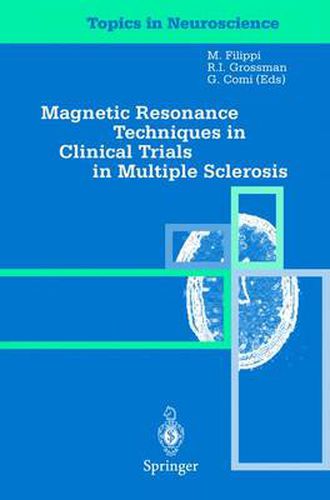Readings Newsletter
Become a Readings Member to make your shopping experience even easier.
Sign in or sign up for free!
You’re not far away from qualifying for FREE standard shipping within Australia
You’ve qualified for FREE standard shipping within Australia
The cart is loading…






This title is printed to order. This book may have been self-published. If so, we cannot guarantee the quality of the content. In the main most books will have gone through the editing process however some may not. We therefore suggest that you be aware of this before ordering this book. If in doubt check either the author or publisher’s details as we are unable to accept any returns unless they are faulty. Please contact us if you have any questions.
We have entered an exciting period in the study of multiple sclerosis and its treatment. Central to this progress has been the introduction of magnetic reso nance techniques. When Young and his colleagues published the first images of the brain in multiple sclerosis at the end of 1981, it was at once obvious that magnetic resonance imaging would playa major role in diagnosis. Intuitively one felt that it would also have a role in increasing our understanding of the pathogenesis of the disease and in monitoring treatment. And so it has proved. Important problems however remain, perhaps the most important of which at present is the weak predictive power of standard magnetic resonance ima ging methods in determining the possibility of progression of impairment and disability. Recently, there have been advances which promise to overcome some of these problems, but decisions about what approach to adopt in selecting patients for clinical trials and which techniques to use in monitoring treatment during their course are still difficult. In this book, Dr. Filippi and his colleagues have assembled an outstanding group of contributors whose work is central to the progress that is being made. The coverage of the issues involved in the use of magnetic resonance techniques in assessing therapeutic effect is comprehensive and, though the field is chan ging rapidly, the principles and much of the detail in the book are likely to have lasting value.
$9.00 standard shipping within Australia
FREE standard shipping within Australia for orders over $100.00
Express & International shipping calculated at checkout
This title is printed to order. This book may have been self-published. If so, we cannot guarantee the quality of the content. In the main most books will have gone through the editing process however some may not. We therefore suggest that you be aware of this before ordering this book. If in doubt check either the author or publisher’s details as we are unable to accept any returns unless they are faulty. Please contact us if you have any questions.
We have entered an exciting period in the study of multiple sclerosis and its treatment. Central to this progress has been the introduction of magnetic reso nance techniques. When Young and his colleagues published the first images of the brain in multiple sclerosis at the end of 1981, it was at once obvious that magnetic resonance imaging would playa major role in diagnosis. Intuitively one felt that it would also have a role in increasing our understanding of the pathogenesis of the disease and in monitoring treatment. And so it has proved. Important problems however remain, perhaps the most important of which at present is the weak predictive power of standard magnetic resonance ima ging methods in determining the possibility of progression of impairment and disability. Recently, there have been advances which promise to overcome some of these problems, but decisions about what approach to adopt in selecting patients for clinical trials and which techniques to use in monitoring treatment during their course are still difficult. In this book, Dr. Filippi and his colleagues have assembled an outstanding group of contributors whose work is central to the progress that is being made. The coverage of the issues involved in the use of magnetic resonance techniques in assessing therapeutic effect is comprehensive and, though the field is chan ging rapidly, the principles and much of the detail in the book are likely to have lasting value.